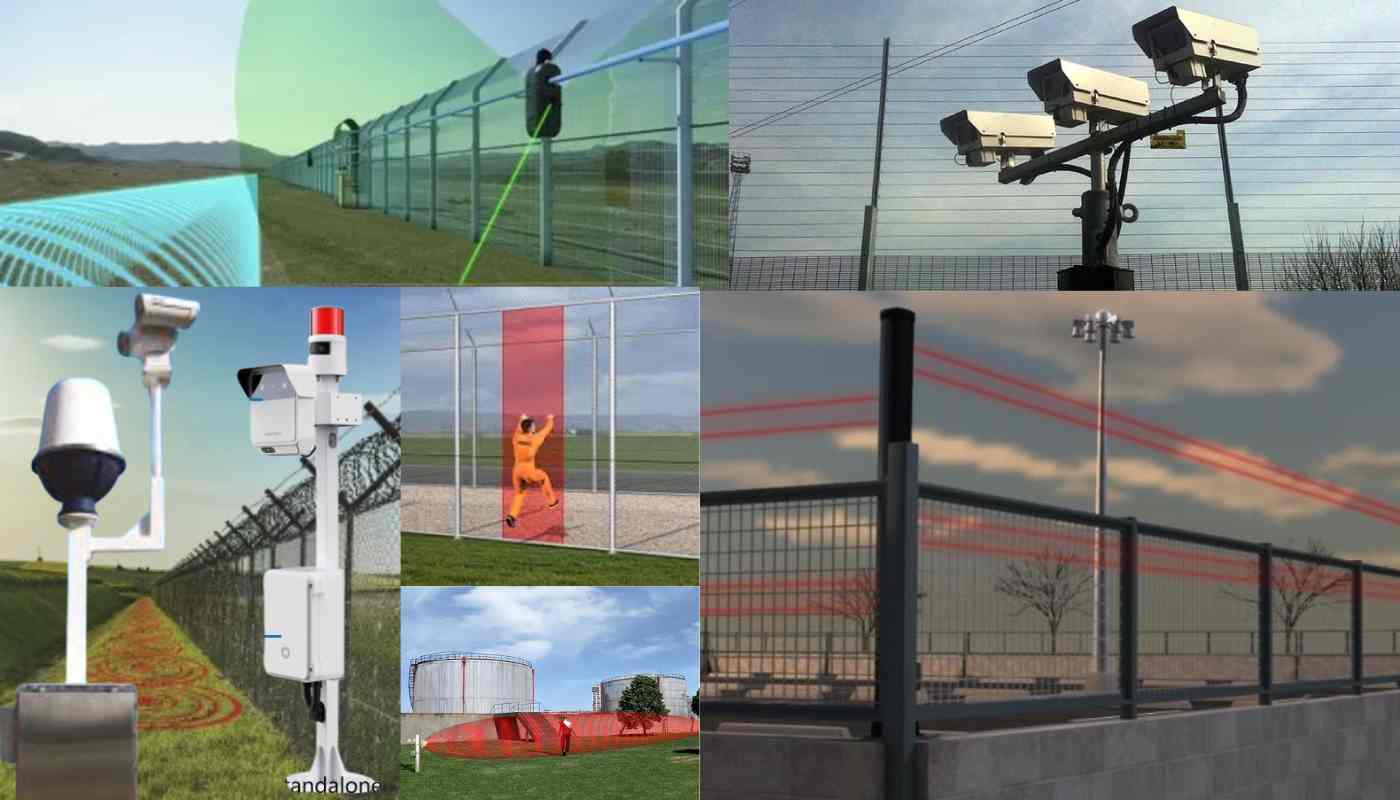Airport Security Perimeter Detection System in South Korea in 2025
The year is 2024, and South Korea’s airport security has evolved to become one of the most sophisticated systems in the world. With rapid advancements in technology, the implementation of cutting-edge solutions ensures the safety of passengers and staff, while mitigating threats effectively. In this comprehensive blog post, we delve into the intricacies of the Airport Security Perimeter Detection System (PIDS) in South Korea, examining the various technologies and strategies employed to protect this critical infrastructure.

The State of South Korea Airport Security
South Korea’s airports are renowned for their stringent security measures. From Incheon International Airport to Gimpo Airport, the focus on robust security systems has never been higher. These airports utilize a combination of Airport Security Cameras, Access Control Systems, and Security Fence Sensors to create a secure environment for travelers. With the increasing number of global threats, South Korea has invested heavily in advanced security technologies to maintain its status as a leader in Aviation Security.
Airport Perimeter Intrusion Detection System (PIDS)
At the heart of South Korea’s airport security lies the Perimeter Intrusion Detection System (PIDS). PIDS is designed to detect and prevent unauthorized access to restricted areas. By integrating various detection technologies such as Fiber Optic Sensors, Seismic Sensors, and Millimeter Wave Radar (MMW), the system ensures comprehensive coverage of the airport perimeter.
- Fiber Optic Sensors: These sensors detect changes in the physical properties of the fiber optic cable, such as strain and temperature, to identify potential intrusions.
- Seismic Sensors: These sensors detect ground vibrations caused by footsteps or vehicles, providing early warning of potential breaches.
- Millimeter Wave Radar (MMW): MMW technology uses high-frequency radio waves to detect and track objects, even in adverse weather conditions.
Advanced Technologies Enhancing Airport Security
LiDAR
LiDAR (Light Detection and Ranging) technology has revolutionized perimeter security with its high-precision detection capabilities. By emitting laser pulses and measuring the reflected signals, LiDAR creates detailed 3D maps of the airport perimeter, detecting any anomalies or unauthorized movements.
CCTV Surveillance and Facial Recognition
CCTV Surveillance systems are ubiquitous in South Korean airports. These systems are equipped with Facial Recognition technology, enabling real-time identification of individuals. By cross-referencing with databases of known threats, authorities can quickly respond to potential security breaches.
Drone Detection
With the rise of drone technology, airports face new security challenges. South Korea has implemented advanced Drone Detection Systems that utilize radio frequency analysis, radar, and optical sensors to detect and neutralize unauthorized drones. These systems are critical for maintaining the safety of both the airspace and the airport perimeter.
Security Fence Sensors
Security Fence Sensors play a crucial role in detecting physical breaches. These sensors are integrated into the perimeter fencing, detecting vibrations, cuts, or attempts to climb the fence. When an intrusion is detected, the system triggers an alarm and notifies security personnel.
Perimeter Security AI and Intelligent Video Analytics (IVA)
Artificial Intelligence (AI) and Intelligent Video Analytics (IVA) are at the forefront of South Korea’s airport security. These technologies analyze video feeds from surveillance cameras, identifying suspicious behavior and potential threats. IVA can detect loitering, unattended bags, and unusual movements, providing a proactive approach to security.
Integration of Security Systems
One of the key aspects of South Korea’s airport security is the Integration of Security Systems. By combining various technologies and systems, airports can achieve a holistic security solution. Integrated security solutions encompass:
- Cybersecurity: Protecting digital systems and data from cyber threats.
- Risk Management: Assessing and mitigating potential security risks.
- Compliance with Security Regulations: Ensuring all security measures adhere to local and international standards.
Perimeter Security Best Practices
False Alarm Reduction
One of the significant challenges in perimeter security is minimizing false alarms. South Korea’s airports have implemented advanced algorithms and machine learning techniques to filter out false positives, ensuring that security personnel can focus on genuine threats.
Security Integration
Effective Security Integration involves combining physical security measures with digital solutions. By integrating access control systems, surveillance cameras, and intrusion detection systems, airports can create a cohesive security network that provides real-time situational awareness.
Remote Monitoring and Video Surveillance
Remote Monitoring allows security personnel to oversee the airport perimeter from a central control room. With Video Surveillance, they can monitor live feeds and respond to incidents promptly. This approach enhances the overall efficiency of airport security operations.
Challenges and Future Directions
While South Korea has made significant strides in airport security, several challenges remain. The rapid advancement of technology requires continuous upgrades and training for security personnel. Additionally, balancing security measures with passenger convenience is an ongoing challenge.
Looking ahead, the focus will be on enhancing Perimeter Security Technologies and adopting innovative solutions. The integration of AI and Machine Learning will play a pivotal role in predictive threat detection and response. Furthermore, collaboration with international security agencies will ensure that South Korea remains at the forefront of Critical Infrastructure Protection.
The Future Of anti Drone System
South Korea’s airport security systems in 2024 are a testament to the country’s commitment to safety and innovation. By leveraging advanced technologies such as LiDAR, Facial Recognition, and Drone Detection, South Korean airports have set a benchmark for Aviation Security. The integration of various security systems, combined with a proactive approach to threat detection, ensures that travelers can have peace of mind knowing that their safety is a top priority.
As we move forward, continued investment in Security Integration and Risk Management will be crucial. By staying ahead of emerging threats and adopting best practices, South Korea will continue to lead the way in airport security, setting an example for the rest of the world.
FAQs
What are the benefits of PIDS in South Korean airports?
PIDS offer a multi-layered defense, using advanced sensors like radar and LiDAR to detect intrusions along the airport perimeter. This frees up security personnel to focus on real threats and reduces delays caused by false alarms.
How does South Korea address the threat of drones?
Drone detection systems and anti-drone guns work together to identify and neutralize unauthorized drones that could pose a risk to aircraft or airport operations.
How does AI play a role in PIDS?
Perimeter Security AI and Intelligent Video Analytics (IVA) analyze sensor data, differentiating between genuine threats and harmless triggers. This allows for a more targeted security response.








